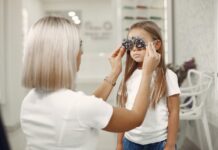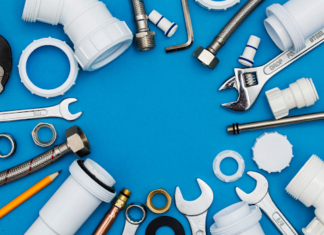Covering your ears may not always be the right way to do things. In the context of personal safety, however, it is.
Maybe, you like hitting the gun range from time to time. Perhaps, you work as an engineer or a construction worker. Either way, you could always benefit from a pair of earmuffs.
Think about it. They are easy to fit and are ideal for everyday wear. The only problem is finding the right pair. Some may not even know where to begin.
You needn’t fret. There are plenty of options out there. The trick is to figure out a few things first merely.
When do your ears need protection?
The one thing that you should know about how sound works is that it is not incremental.
Consider this example. A refrigerator with 50 decibels (dB) and a dishwasher with 60dB will be nowhere close to each other in terms of loudness. The refrigerator will only be half as loud as the dishwasher.
Similarly, a laundry machine with 70dB will make four times the noise of a 50dB refrigerator.
If you work in an environment with high noise levels, you need to protect your ears. Due to how noise is heard, what you may initially perceive as harmless might hurt you a lot.
For instance, a study by Safe Work Australia states that 28-32% of Australians are exposed to loud noises at work. Thus, it is never wise to dismiss how sensitive your ears are.
Are there different kinds of protective gear for ears?
All forms of hearing protection aren’t the same. Some are better than others in specific cases. These, then, are the two primary types of earmuffs available on the market.
Passive
The more affordable the two available options, passive earmuffs form a general barrier to shield the ears from sound.
Today, these protective accessories are made using selectively engineered materials. Their updated designs allow them to break up any incoming sound waves. That results in a higher Noise Reduction Rating (NRR) for these models than was previously possible.
Electronic
A little more expensive than the passive variant, electronic ear protection accessories offer some unique features.
One such feature is the ability to increase the decibel levels of the surrounding sounds. For instance, when a work environment is extremely noisy, this feature can help people receive commands and instructions with more clarity.
Another fantastic feature these protective accessories have is noise compression. Essentially, the circuitry in the device recognises anything over 82dB and compresses it until the noise level returns to normal.
Points to look for when purchasing protective gear for your ears?
There are broadly two things to keep in mind when purchasing protective gear. They are discussed below:
- A good rating
A good rating doesn’t imply customer reviews. In this context, a good rating refers to NRR. The higher the rating, the better it is for you.
You could always opt for an electronic variant. As mentioned earlier, they have some added advantages to them. You don’t necessarily need it, though. The primary thing that matters is how well a protective accessory can shield you from unwanted sounds.
Looking for a good NRR rating is enough if this is your first time purchasing protective gear for your ears.
- The way it fits
Unless you are buying earplugs, you usually won’t have any issues related to size or fitting. However, you need to consider whether you will be wearing other additional gear.
For example, if you have to wear a hard hat at work, look for accessories that let you comfortably put everything on.
In summary
That’s all there is to it.
The need to protect your ears is not something that is talked about often, unfortunately. However, now that you know all of the above, maybe you will be the one to educate others.









